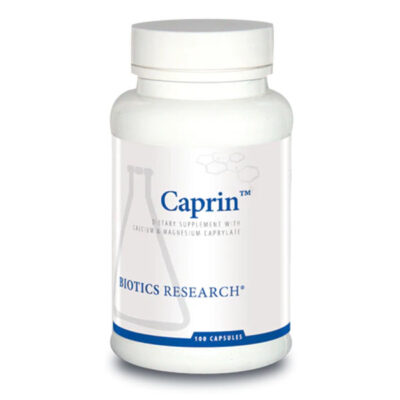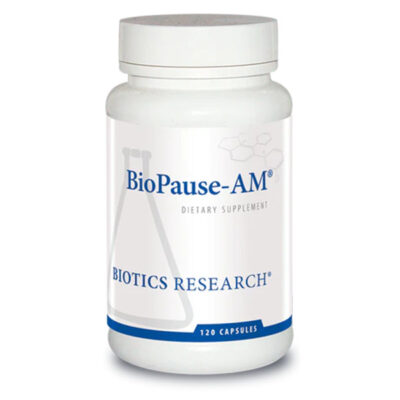BIO-GLYCOZYME FORTE (Sugar Control Formula)
*** Please Login or Register with DC Nutrition to see Prices and Add To Cart. ***
Login | Create An Account / Register
Bio-Glycozyme Forte is the best broad-spectrum glycemic product available in the marketplace. There's nothing that even comes close to it.
You would want to try Bio-Glycozyme Forte for reactive hypoglycemia; for B complex insufficiency in situations where you need the accessory nutrients to go along with the B vitamins; for patients who can fall asleep but can't stay asleep; and again for reactive hypoglycemia. Also, for patients who fall asleep or want to crash up to two hours after they've eaten, (but not immediately after they have eaten), Bio-Glycozyme Forte will usually work because this is a strong sign of reactive hypoglycemia. Patients who want to fall asleep immediately after eating have carbohydrate sensitivity.
This product works in reactive hypoglycemia, adrenal fatigue, general fatigue, stress, highly refined diets and carbohydrate sensitivity. It's best to take the product between meals at 10: 00 a.m., 3: 00 p.m., and two hours after supper when the blood sugar is dropping and at the point you may be entering into a crash-and-burn syndrome.
If your blood pressure is very low also, you may need to add a small amount of Cytozyme-AD (neonatal adrenal tissue). This nutrient is also in Bio-Glycozyme Forte, but in some cases, the amount may not be sufficient
Together with a reasonable diet, Bio-Glycozyme Forte will generally bring the reactive hypoglycemic person around very quickly and you will see significant changes in very short order.
PRODUCT DESCRIPTION
BID-GLYCOZYME FORTE
(Glycolytic Combination)
** Three (3) tablets supply:
Vitamin B1 (cocarboxylase) 15mg
Vitamin B2 (riboflavin 5-phosphate) 15 mg
Vitamin B6 (pyridoxal-5-phosphate) 50 mg
Vitamin B12 (resin bound) 100 mcg
Pantothenic Acid (B5) 100mg
Niacinamide (B3 ascorbate) 25 mg
Folic Acid 400 mcg
Biotin 300 mcg
Inositol 35 mg
Choline 35 mg
Vitamin C (mixed ascorbates) 120mg
Neonatal Bovine Adrenal Complex 40 mg
Neonatal Bovine Pituitary/ Hypothalamus Complex 20mg
Neonatal Pancreas 15mg
Neonatal Bovine Liver 15 mg
Neonatal Bovine Brain 5 mg
Neonatal Duodenum substance 5 mg
Natural mixed carotenoids 2,500 1. U.
Vitamin A (palmitate) 2,500 I.U.
Vitamin D3 200 I.U.
Vitamin E (d-alpha tocopheryl acetate) 30 I.U.
Vitamin K1 10 mcg
Calcium (citrate, ascorbate) 40 mg
Magnesium (aspartate, gluconate) 40 mg
Potassium (chloride) 33 mg
Zinc (gluconate) 15 mg
Manganese (gluconate) 5 mg
Copper (gluconate) 2mg
Chromium (GTF vegetable culture) 100 mcg
Selenium (vegetable culture) 20 mcg
Vanadium (vegetable culture) 10 mcg
L-Lysine HCL 40 mg
L-Methionine 20 mg
Superoxide Dismutase 20 mcg
Catalase 20 mcg
SUGGESTED USE: One (1) to three (3) tablets each day as a dietary supplement or as otherwise directed by a health care professional.
Contains: 90 Tablets; 270 Tablets
Product #: 1134; 1135
NDC: 55146-01134; 55146-01135
ADDENDUM
Blood Glucose Regulation
Effective blood glucose regulation is fundamentally important for health. Even mild disruptions of glucose homeostasis can have adverse consequences. On the other hand, reactive hypoglycemia may result in a variety of physical and psychological symptoms, though it does not involve organ failure. Normally fasting blood glucose is maintained within a narrow range. After a carbohydrate meal, blood sugar increases for several hours, then returns to base line in response to homoeostatic mechanisms. The rise in blood glucose is due to the intestinal absorption of glucose, released from starch and sugars by amylase and disaccharidases. Fructose and galactose are more slowly metabolized to glucose by the liver. Insulin secreted by beta cells of the endocrine pancreas is released in response to elevated blood sugar. Insulin, a major anabolic hormone, stimulates skeletal muscle and adipose tissue to take up glucose from the circulation.
The liver, brain and red blood cells do not require insulin for glucose uptake. The central nervous system requires glucose as its primary fuel. Though the brain accounts for only about 10% of body weight, it uses more than 30% of blood glucose. To maintain fasting blood glucose levels in the face of this steady drain of glucose, a variety of hormones are required, chiefly, glucagon from alpha cells of the endocrine pancreas and glucocorticoids from the adrenal glands. Glucagon acts rapidly on the liver to break down stored glycogen to glucose, while glucocorticolds more slowly stimulate protein breakdown; for example, in skeletal muscle to release free amino acids. Many amino acids can be converted to glucose by the liver (gluconeogenesis). Fat breakdown to free fatty acids is also stimulated by glucagon in order to provide an alternative fuel for most of the body, exclusive of the CNS.
Other glands involved: the thyroid gland helps determine the metabolic rate, while the pituitary orchestrates most endocrine activity including the thyroid. The kidneys reabsorb most of the glucose in the filtrate. However, when blood glucose increases above a threshold, the kidneys spill glucose into the urine, a sign of abnormal glucose regulation.
Nutritional Support
The interaction of the endocrine system with organs and tissues to maintain blood glucose requires a full array of micronutrients. A diet compromised by processed, refined foods may not supply adequate amounts of these nutrients. In addition, individuals with blood glucose disorders may have special dietary needs for such nutrients.
The B Complex
The B vitamins work together in central roles to produce energy from amino acids, fat and carbohydrate via the tricarboxylic acid cycle. Thiamine, Riboflavin, and Vitamin B6 are present in Bio-Glycozyme as thiamine pyrophosphate, riboflavin 5-phosphate and pyridoxal 5-phosphate. These phosphorylated derivates represent biologically active, coenzyme (enzyme helper) forms of B vitamins. Imblalanced glucose metabolism can be linked to low thiamine status. Diabetic mice were shown to be riboflavin deficient. Vitamin B6 is required by enzymes called transaminases in the first step of the break down of most amino acids for energy production. Serum B6 levels were below normal in 25% of diabetics. Vitamin B6 deficiency is related to impaired nerve function.
Niacinamide forms NAD and NADP, essential redox coenzymes.
Pantothenic acid forms coenzyme A. This coenzyme is required to oxidize protein, carbohydrate and fat via the tricarboxylic acid cycle. Therefore, it is essential for efficient energy production.
Vitamin B12 and Folic Acid are responsible for utilization of glycine and serine from glucose as methyl donors and for the conversion of the byproduct homocysteine back to either methionine or to cysteine. Hyperhomocysteinernia is often associated with impaired vascular function. Vitamin B12 may be required for glucose homeostasis.
Biotin assists in the formation of glucose from amino acids and lactate and it supports liver utilization of glucose via the enzyme glucokinase.
Other Vitamins and Factors
Vitamin Ais required for the maintenance and development of normal mucosa and epithelial tissues. Decreased vitamin A status correlated with altered pancreatic functioning and glucose metabolism. Vitamin A deficiency coupled with induced diabetes in lab animals impaired gut absorptive functions.
Vitamin K activates certain blood clotting factors and it is required to synthesize osteocalcin required in calcium homeostasis.
Choline and Inositol are considered lipotropes, nutrients able to normalize fatty acid and ketone body metabolism in laboratory animals. They are precursors of a variety of phospholipids that serve essential functions in liver, including the transfer of lipids as lipoproteins.
Lysine and Methionine are precursors of L-Carnitine, which acts to transport fatty acids for mitochondria energy production. In addition, methionine functions as a methyl donor for phospholipid synthesis and is classified as a lipotropic nutrient to help normalize liver fatty acid metabolism.
Antioxidants
Vitamin C represents a major water-soluble antioxidant of plasma. Vitamin C scavenges free radicals including peroxyl radicals and superoxide, and it can regenerate alpha tocopherol from its radical after it has neutralized lipid peroxyl radicals. In addition, vitamin C is required for collagen synthesis and for the integrity of the vascular walls, basement membranes and capillaries. Plasma vitamin C levels may be inversely related to blood sugar levels. Vitamin C transport across cell membranes may be impaired with dysinsulinism. Furthermore, vitamin C may reduce the accumulation of sorbitol, thus helping to normalize cellular functions .
Vitamin E is the major lipid-soluble antioxidant of the body and prevents oxidation of membrane polyunsaturated fatty acids due to oxidative stress. There are many complications associated with free radical damage. For example, excessive peroxidemediated damage may be related to lower vitamin C and vitamin E. Vitamin E supplementation may improve insulin. Vitamin E supplementation can lower lipid peroxide levels.
Natural mixed carotenoids provide alpha carotene, lutein, cryptoxanthin and zeaxanthin in addition to beta carotene. They may be better absorbed by humans and function more effectively as antioxidants than synthetic beta carotene.
Selenium is classified as an antioxidant nutrient because it functions as a cofactor for glutathione peroxidase. This family of enzymes destroys hydrogen p<B=
ide and lipid peroxides.
Minerals
Magnesium complexes with ATP in most energydependent reactions of the body. Magnesium deficiency may play a role in the development of insulin resistance. Serum magnesium was reported to be low in certain individuals. Magnesium has been called Nature's physiologic calcium blocker. Magnesium intake of Americans was below the RDA and 80% or more of American women consume inadequate magnesium.
<B<Calcium levels in serum are tightly regulated, a reflection of the fact that calcium is required for muscle contraction, nerve impulse transmission and ion transport. Free calcium is involved in many signal transduction pathways of cells. Low calcium uptake with aging may be a factor in abnormal cellular calcium distribution.
Potassium-deficient lab animals exhibited elevated blood glucose. Obese patients on a modified fast experienced decreased insulin and glucose utilization unless supplemented with potassium.
Trace Minerals
Vanadium as vanadate possesses insulin-like activity. It increases insulin sensitivity in animal tissues and stimulated insulin secretion in vitro.
Zinc is required for insulin processing. The typical American diet is low in zinc; low zinc levels may adversely affect glucose tolerance.
Chromium as ""glucose tolerance factor"" potentiates the action of insulin. This factor is a complex of niacin, chromium and amino acids and is the form of chromium common in foods. Chromium levels decline with age among Americans, and fewer than 50% of Americans consume adequate chromium. Copper is involved in insulin binding. Copper deficiency is linked with increased glucosylated hemoglobin, an indicator of inadequate blood glucose regulation.
Manganese is a cofactor for key enzymes involved in carbohydrate metabolism. The usual diet may be low in manganese. Manganese-deficient animals were characterized by irregular pancreatic beta cells and abnormal glucose tolerance.
Glandular Support
Bio-Glycozyme Forte contains neonatal bovine adrenal complex, pituitary/hypothalamus complex, pancreas, liver, brain and duodenal substance.
Glandular tissues are prepared by Biotics Research under mild conditions to maintain peptide and enzyme factors. Adrenal, pituitary/ hypothalamus complex, liver, pancreas and duodenum are organs implicated in the regulation of carbohydrate metabolism in blood glucose regulation.
Biotics Research Corporation selected neonatal tissues because such tissues possess high anabolic activity. Factors associated with rapid growth are more likely to be present than in adult animals. In addition, neonatal tissues have not been subjected to life-long exposure to pollutants and environmental stressors. For example, independent evaluation of common pesticides in neonatal glandulars has indicated that levels are below the limits of detection. Histologic examination of adult (2-5 years old) bovine glands and neonatal (new born) bovine glands dramatically illustrates the differences due to aging and environmental exposure. These effects contribute to a loss of organ function, accumulation of lipofuscin and/or increased fat deposition. As an example, neonatal adrenal glands reveal three distinct cortical zones, but these zones are much less distinct in the adult bovine gland. In addition, the zona glomerulus of adult cortex exhibits a large amount of lipofuscin, indicating cumulative free radical damage. These deposits are absent from the neonatal bovine glands. All glandular supplements produced by Biotics Research Corporation are obtained from domestic, USDA approved animal.






Reviews
There are no reviews yet.